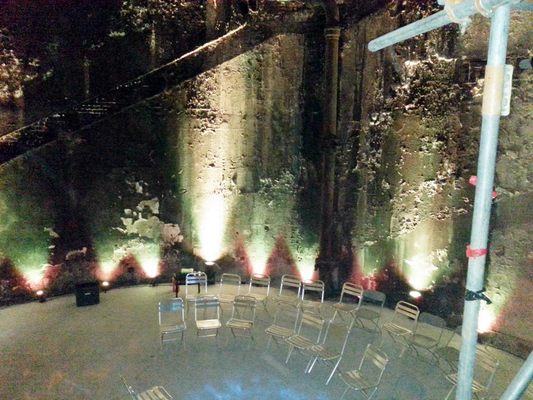About
Inside the Engine House, part of the Thames Tunnel that once held steam-powered pumps, is the Brunel Museum. Through its doors lies the dark world below London. An unprecedented feat of engineering ingenuity, the tunnel was home to an underground funfair, marketplace, crime, prostitution, and eventually trains. Now this portion has been reborn as a performance and exhibition space.
At the beginning of the 19th century, London city planners identified the need to connect the North and South banks of the Thames. Docks were too crowded with river traffic and bridges were expensive and congested. Engineer Marc Brunel, with the help of his teenage son Isambard, attempted what had been considered impossible in the past: They would dig a tunnel underneath the Thames River.
It required a 1,000-ton instrument called the tunneling shield, which would burrow into the earth under the force of its own weight like a pastry cutter. Once underground, Brunel's laborers dug horizontally through the sewage and mud. It was slow, brutal work. The work was impeded by regular floods and methane gas explosions, and took nearly two decades. Isambard himself was nearly trapped behind a locked emergency door during one flood, only to be pulled out by the collar of his coat.
The Thames Tunnel was an engineering success but not a financial one. As soon as it opened in 1843, people came from far and wide to walk beneath the river. However, planned provisions for vehicles proved financially unfeasible, so it simply remained a footpath. The walkway eventually became an urban marketplace where people could buy souvenirs commemorating their visit to the tunnel. Not much later though, the Thames Tunnel had fallen into social and structural decay. It was a spot for thieves and prostitutes to hide beneath the city. Eventually it was repurposed as a train tunnel.
The circular Brunel Engine House in Rotherhithe was originally there to pump water from the tunnel when it flooded, and later became a ventilation shaft. Transit historians took groups on tours of the old tunnel and interest grew. In 2016, the Brunel Museum, which has educated the public on the Brunels' engineering accomplishments since 1961, opened the engine house as an exhibition space complete with a café and rooftop garden. The inaugural performance was by singers of the roving Popup Opera, who appreciated the space's accidental acoustics. Despite new coats of paint and strings of twinkling fairy lights, the museum's walls bear the marks of its previous occupation, coated in decades of industrial soot.
Related Tags
Community Contributors
Added By
Published
October 21, 2016
























































